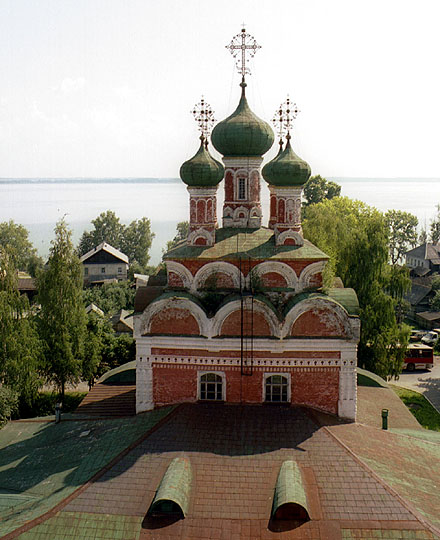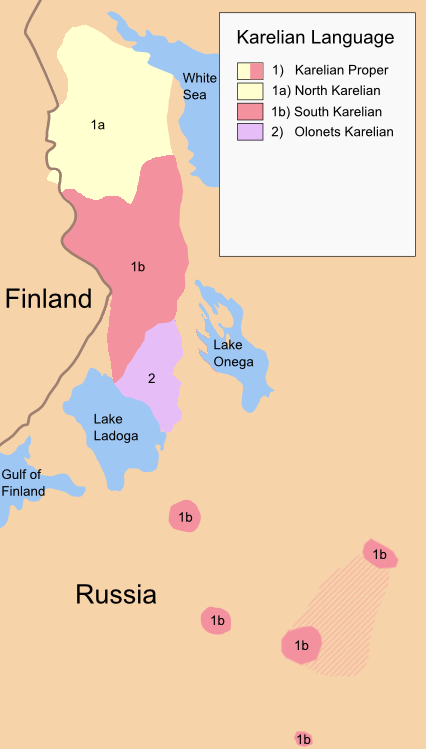|
Ostashkovsky Uyezd
Ostashkovsky Uyezd (''ą×čüčéą░čłą║ąŠą▓čüą║ąĖą╣ čāąĄąĘą┤'') was one of the subdivisions of the Tver Governorate of the Russian Empire. It was situated in the southwestern part of the governorate. Its administrative centre was Ostashkov. Demographics At the time of the Russian Empire Census of 1897, Ostashkovsky Uyezd had a population of 130,161. Of these, 98.8% spoke Russian Russian(s) refers to anything related to Russia, including: *Russians (, ''russkiye''), an ethnic group of the East Slavic peoples, primarily living in Russia and neighboring countries *Rossiyane (), Russian language term for all citizens and peo ..., 0.5% Karelian, 0.4% Estonian and 0.1% Latvian as their native language. References Uezds of Tver Governorate Tver Governorate {{Russia-gov-stub ... [...More Info...] [...Related Items...] OR: [Wikipedia] [Google] [Baidu] |
Tver Governorate
Tver Governorate (russian: ąóą▓ąĄčĆčüą║ą░čÅ ą│čāą▒ąĄčĆąĮąĖčÅ, ''Tverskaya guberniya'') was an administrative division (a ''guberniya'') of the Russian Empire and Russian Socialist Federative Soviet Republic, Russian SFSR, which existed from 1796 until 1929. Its seat was in Tver. The governorate was located in the center of the European part of the Russian Empire and bordered Novgorod Governorate in the north, Yaroslavl Governorate in the east, Vladimir Governorate in the southeast, Moscow Governorate in the south, Smolensk Governorate in the southwest, and Pskov Governorate in the west. The area of the governorate is currently split between Tver Oblast, Tver and Moscow Oblasts. Minor parts of Tver Governorate also currently belong to Yaroslavl Oblast, Yaroslavl and Novgorod Oblasts. History In the 18th century, the areas which were later occupied by Tver Governorate were split between Moscow Governorate, Moscow and Novgorod Governorates. On 25 November 1775 Tver Viceroyalt ... [...More Info...] [...Related Items...] OR: [Wikipedia] [Google] [Baidu] |
Russian Empire
The Russian Empire was an empire and the final period of the Russian monarchy from 1721 to 1917, ruling across large parts of Eurasia. It succeeded the Tsardom of Russia following the Treaty of Nystad, which ended the Great Northern War. The rise of the Russian Empire coincided with the decline of neighbouring rival powers: the Swedish Empire, the PolishŌĆōLithuanian Commonwealth, Qajar Iran, the Ottoman Empire, and Qing China. It also held colonies in North America between 1799 and 1867. Covering an area of approximately , it remains the third-largest empire in history, surpassed only by the British Empire and the Mongol Empire; it ruled over a population of 125.6 million people per the 1897 Russian census, which was the only census carried out during the entire imperial period. Owing to its geographic extent across three continents at its peak, it featured great ethnic, linguistic, religious, and economic diversity. From the 10thŌĆō17th centuries, the land ... [...More Info...] [...Related Items...] OR: [Wikipedia] [Google] [Baidu] |
Ostashkov
Ostashkov (russian: ą×čüčéą░╠üčłą║ąŠą▓) is a types of inhabited localities in Russia, town and the administrative center of Ostashkovsky District in Tver Oblast, Russia, on a peninsula at the southern shore of Lake Seliger, west of Tver, the administrative center of the oblast. Population: History Early developments The island of Klichen was first mentioned in a letter sent by Grand Duke Algirdas of Lithuania to the Ecumenical Patriarch of Constantinople in 1371. After the island was pillaged by ushkuiniks, Novgorod pirates several years later, two of Klichen's surviving inhabitants, Ostashko and Timofey, moved to the mainland, where they founded the villages Ostashkovo and Timofeyevo, respectively. The former belonged to the Patriarch of Moscow and all Rus', Moscow Patriarchs, and the latterŌĆöto the Joseph-Volokolamsk Monastery. In 1770, both villages were merged into the town of Ostashkov. Ostashkov is commonly regarded as one of the finest Russian provincial towns. Its mai ... [...More Info...] [...Related Items...] OR: [Wikipedia] [Google] [Baidu] |
Russian Empire Census
The first general census of the population of the Russian Empire in 1897 ( pre-reform Russian: ) was the first and only nation-wide census performed in the Russian Empire (the Grand Duchy of Finland was excluded). It recorded demographic data as of . Previously, the Central Statistical Bureau issued statistical tables based on fiscal lists (čĆąĄą▓ąĖąĘčüą║ąĖąĄ čüą┐ąĖčüą║ąĖ). The second Russian Census was scheduled for December 1915, but was cancelled because of World War I, which had begun during 1914. It was not rescheduled before the Russian Revolution. The next census in Russia only occurred at the end of 1926, almost three decades later. Organization The census project was suggested during 1877 by Pyotr Semenov-Tyan-Shansky, a famous Russian geographer and director of the Central Statistical Bureau, and was approved by Czar Nicholas II in 1895. The census was performed in two stages. For the first stage (December 1896 — January 1897) the counters (135,000 persons: t ... [...More Info...] [...Related Items...] OR: [Wikipedia] [Google] [Baidu] |
Russian Language
Russian (russian: čĆčāčüčüą║ąĖą╣ čÅąĘčŗą║, russkij jazyk, link=no, ) is an East Slavic languages, East Slavic language mainly spoken in Russia. It is the First language, native language of the Russians, and belongs to the Indo-European languages, Indo-European language family. It is one of four living East Slavic languages, and is also a part of the larger Balto-Slavic languages. Besides Russia itself, Russian is an official language in Belarus, Kazakhstan, and Kyrgyzstan, and is used widely as a lingua franca throughout Ukraine, the Caucasus, Central Asia, and to some extent in the Baltic states. It was the De facto#National languages, ''de facto'' language of the former Soviet Union,1977 Soviet Constitution, Constitution and Fundamental Law of the Union of Soviet Socialist Republics, 1977: Section II, Chapter 6, Article 36 and continues to be used in public life with varying proficiency in all of the post-Soviet states. Russian has over 258 million total speakers worldwide. ... [...More Info...] [...Related Items...] OR: [Wikipedia] [Google] [Baidu] |
Karelian Language
Karelian (North Karelian and Livvi Karelian: ; Ludic: ; Tver Karelian: ) is a Finnic language spoken mainly in the Russian Republic of Karelia. Linguistically, Karelian is closely related to the Finnish dialects spoken in eastern Finland, and some Finnish linguists have even classified Karelian as a dialect of Finnish, though in the modern day it is widely considered a separate language. Karelian is not to be confused with the Southeastern dialects of Finnish, sometimes referred to as ("Karelian dialects") in Finland. There is no single standard Karelian language. Each writer writes in Karelian according to their own dialectal form. Three main written standards have been developed, for North Karelian, Olonets Karelian (also known as Livvi Karelian) and Tver Karelian. Ludic Karelian also appears in writing. All variants are written with the Latin-based Karelian alphabet, though the Cyrillic script has been used in the past. Classification Karelian belongs to the Finnic branch ... [...More Info...] [...Related Items...] OR: [Wikipedia] [Google] [Baidu] |
Estonian Language
Estonian ( ) is a Finnic language, written in the Latin script. It is the official language of Estonia and one of the official languages of the European Union, spoken natively by about 1.1 million people; 922,000 people in Estonia and 160,000 outside Estonia. Classification Estonian belongs to the Finnic branch of the Uralic language family. The Finnic languages also include Finnish and a few minority languages spoken around the Baltic Sea and in northwestern Russia. Estonian is subclassified as a Southern Finnic language and it is the second-most-spoken language among all the Finnic languages. Alongside Finnish, Hungarian and Maltese, Estonian is one of the four official languages of the European Union that are not of an Indo-European origin. From the typological point of view, Estonian is a predominantly agglutinative language. The loss of word-final sounds is extensive, and this has made its inflectional morphology markedly more fusional, especially with respect to no ... [...More Info...] [...Related Items...] OR: [Wikipedia] [Google] [Baidu] |
Latvian Language
Latvian ( ), also known as Lettish, is an Eastern Baltic language belonging to the Baltic branch of the Indo-European language family, spoken in the Baltic region. It is the language of Latvians and the official language of Latvia as well as one of the official languages of the European Union. There are about 1.3 million native Latvian speakers in Latvia and 100,000 abroad. Altogether, 2 million, or 80% of the population of Latvia, speak Latvian. Of those, around 1.16 million or 62% of Latvia's population use it as their primary language at home, however excluding the Latgale Region it is spoken as a native language in villages and towns by over 90% of the population. As a Baltic language, Latvian is most closely related to neighboring Lithuanian (as well as Old Prussian, an extinct Baltic language); however Latvian has followed a more rapid development. In addition, there is some disagreement whether Latgalian and Kursenieki, which are mutually intelligible with Latvian, s ... [...More Info...] [...Related Items...] OR: [Wikipedia] [Google] [Baidu] |
Ostashkovsky Uyezd
Ostashkovsky Uyezd (''ą×čüčéą░čłą║ąŠą▓čüą║ąĖą╣ čāąĄąĘą┤'') was one of the subdivisions of the Tver Governorate of the Russian Empire. It was situated in the southwestern part of the governorate. Its administrative centre was Ostashkov. Demographics At the time of the Russian Empire Census of 1897, Ostashkovsky Uyezd had a population of 130,161. Of these, 98.8% spoke Russian Russian(s) refers to anything related to Russia, including: *Russians (, ''russkiye''), an ethnic group of the East Slavic peoples, primarily living in Russia and neighboring countries *Rossiyane (), Russian language term for all citizens and peo ..., 0.5% Karelian, 0.4% Estonian and 0.1% Latvian as their native language. References Uezds of Tver Governorate Tver Governorate {{Russia-gov-stub ... [...More Info...] [...Related Items...] OR: [Wikipedia] [Google] [Baidu] |
Uezds Of Tver Governorate
An uezd (also spelled uyezd; rus, čāąĄ╠üąĘą┤, p=╩Ŗ╦łjest), or povit in a Ukrainian context ( uk, ą┐ąŠą▓č¢čé), or Kreis in Baltic-German context, was a type of administrative subdivision of the Grand Duchy of Moscow, the Russian Empire, and the early Russian SFSR, which was in use from the 13th century. For most of Russian history, uezds were a second-level administrative division. By sense, but not by etymology, ''uezd'' approximately corresponds to the English "county". General description Originally describing groups of several volosts, they formed around the most important cities. Uezds were ruled by the appointees ('' namestniki'') of a knyaz and, starting from the 17th century, by voyevodas. In 1708, an administrative reform was carried out by Peter the Great, dividing Russia into governorates. The subdivision into uyezds was abolished at that time but was reinstated in 1727, as a result of Catherine I's administrative reform. By the Soviet administrative reform of 1923Ō ... [...More Info...] [...Related Items...] OR: [Wikipedia] [Google] [Baidu] |




